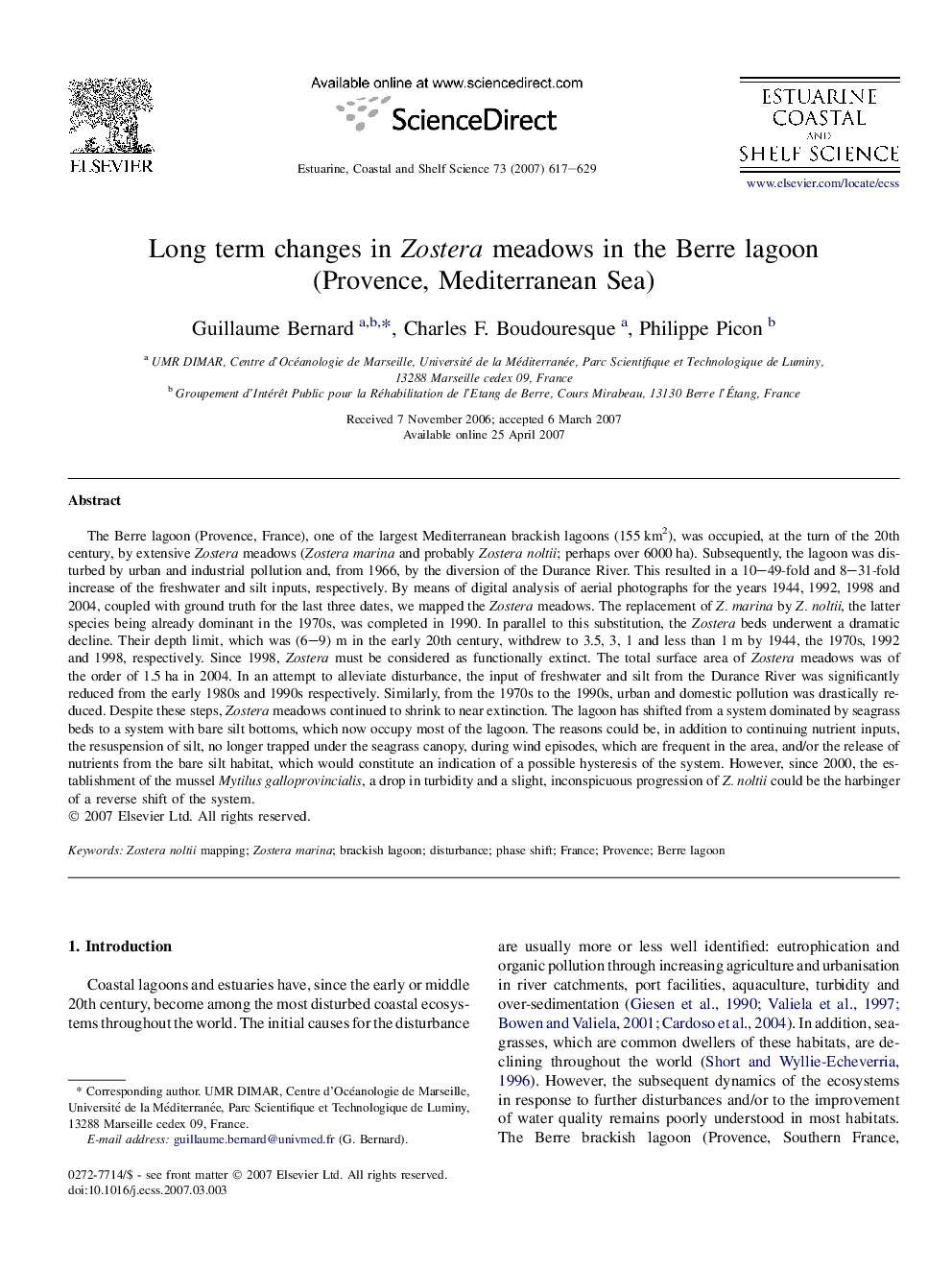| کد مقاله | کد نشریه | سال انتشار | مقاله انگلیسی | نسخه تمام متن |
|---|---|---|---|---|
| 4541798 | 1626703 | 2007 | 13 صفحه PDF | دانلود رایگان |

The Berre lagoon (Provence, France), one of the largest Mediterranean brackish lagoons (155 km2), was occupied, at the turn of the 20th century, by extensive Zostera meadows (Zostera marina and probably Zostera noltii; perhaps over 6000 ha). Subsequently, the lagoon was disturbed by urban and industrial pollution and, from 1966, by the diversion of the Durance River. This resulted in a 10–49-fold and 8–31-fold increase of the freshwater and silt inputs, respectively. By means of digital analysis of aerial photographs for the years 1944, 1992, 1998 and 2004, coupled with ground truth for the last three dates, we mapped the Zostera meadows. The replacement of Z. marina by Z. noltii, the latter species being already dominant in the 1970s, was completed in 1990. In parallel to this substitution, the Zostera beds underwent a dramatic decline. Their depth limit, which was (6–9) m in the early 20th century, withdrew to 3.5, 3, 1 and less than 1 m by 1944, the 1970s, 1992 and 1998, respectively. Since 1998, Zostera must be considered as functionally extinct. The total surface area of Zostera meadows was of the order of 1.5 ha in 2004. In an attempt to alleviate disturbance, the input of freshwater and silt from the Durance River was significantly reduced from the early 1980s and 1990s respectively. Similarly, from the 1970s to the 1990s, urban and domestic pollution was drastically reduced. Despite these steps, Zostera meadows continued to shrink to near extinction. The lagoon has shifted from a system dominated by seagrass beds to a system with bare silt bottoms, which now occupy most of the lagoon. The reasons could be, in addition to continuing nutrient inputs, the resuspension of silt, no longer trapped under the seagrass canopy, during wind episodes, which are frequent in the area, and/or the release of nutrients from the bare silt habitat, which would constitute an indication of a possible hysteresis of the system. However, since 2000, the establishment of the mussel Mytilus galloprovincialis, a drop in turbidity and a slight, inconspicuous progression of Z. noltii could be the harbinger of a reverse shift of the system.
Journal: Estuarine, Coastal and Shelf Science - Volume 73, Issues 3–4, July 2007, Pages 617–629